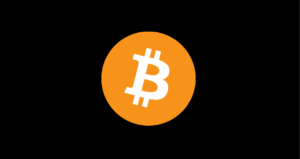Polygon, a rapidly expanding blockchain network, is revolutionizing the world of cryptocurrency with its innovative technology. This article will guide you through the fundamentals of Polygon, its key features, and its role in the ever-evolving crypto space.
At its core, Polygon is a layer 2 scaling solution that enhances the scalability and versatility of Ethereum. By utilizing Polygon, users can conduct faster and more cost-effective transactions compared to the Ethereum mainnet. This is achieved through the implementation of sidechains, which help offload transactions from the main Ethereum chain, reducing congestion and gas fees.
One of the key benefits of Polygon is its compatibility with Ethereum, enabling seamless interoperability between the two networks. This allows developers to leverage Polygon’s infrastructure while still benefiting from Ethereum’s vast ecosystem and liquidity. As a result, projects built on Polygon can tap into a wide range of decentralized applications (dApps) and decentralized finance (DeFi) protocols available on Ethereum.
Moreover, Polygon supports a variety of token standards, including ERC-20 and ERC-721, making it a versatile platform for creating and exchanging both fungible and non-fungible tokens (NFTs). NFTs, which have gained significant traction in the digital art and collectibles space, can be minted and traded on Polygon with lower fees and faster transaction times compared to the Ethereum mainnet.
For users looking to convert their cryptocurrencies to and from Polygon, several methods are available. Decentralized exchanges (DEXs) like Uniswap and SushiSwap offer liquidity pools that support Polygon tokens, allowing users to swap between different assets seamlessly. Additionally, centralized exchanges such as Binance and Coinbase have started to integrate Polygon, providing users with more options for converting their cryptocurrencies.
When it comes to choosing which crypto assets to hold on Polygon, users have a wide array of options. In addition to popular tokens like MATIC, the native token of the Polygon network, users can explore a diverse range of assets issued on the platform. From stablecoins like USDC to innovative DeFi tokens, Polygon offers a wealth of investment opportunities for crypto enthusiasts.
In conclusion, Polygon stands out as a promising blockchain network that addresses the scalability and cost challenges faced by Ethereum users. With its innovative technology, seamless interoperability with Ethereum, and support for a wide range of crypto assets, Polygon is poised to shape the future of decentralized finance and NFT markets. Whether you are a developer looking to build on a scalable blockchain or an investor seeking new opportunities, exploring Polygon can open up exciting possibilities in the world of cryptocurrencies.

